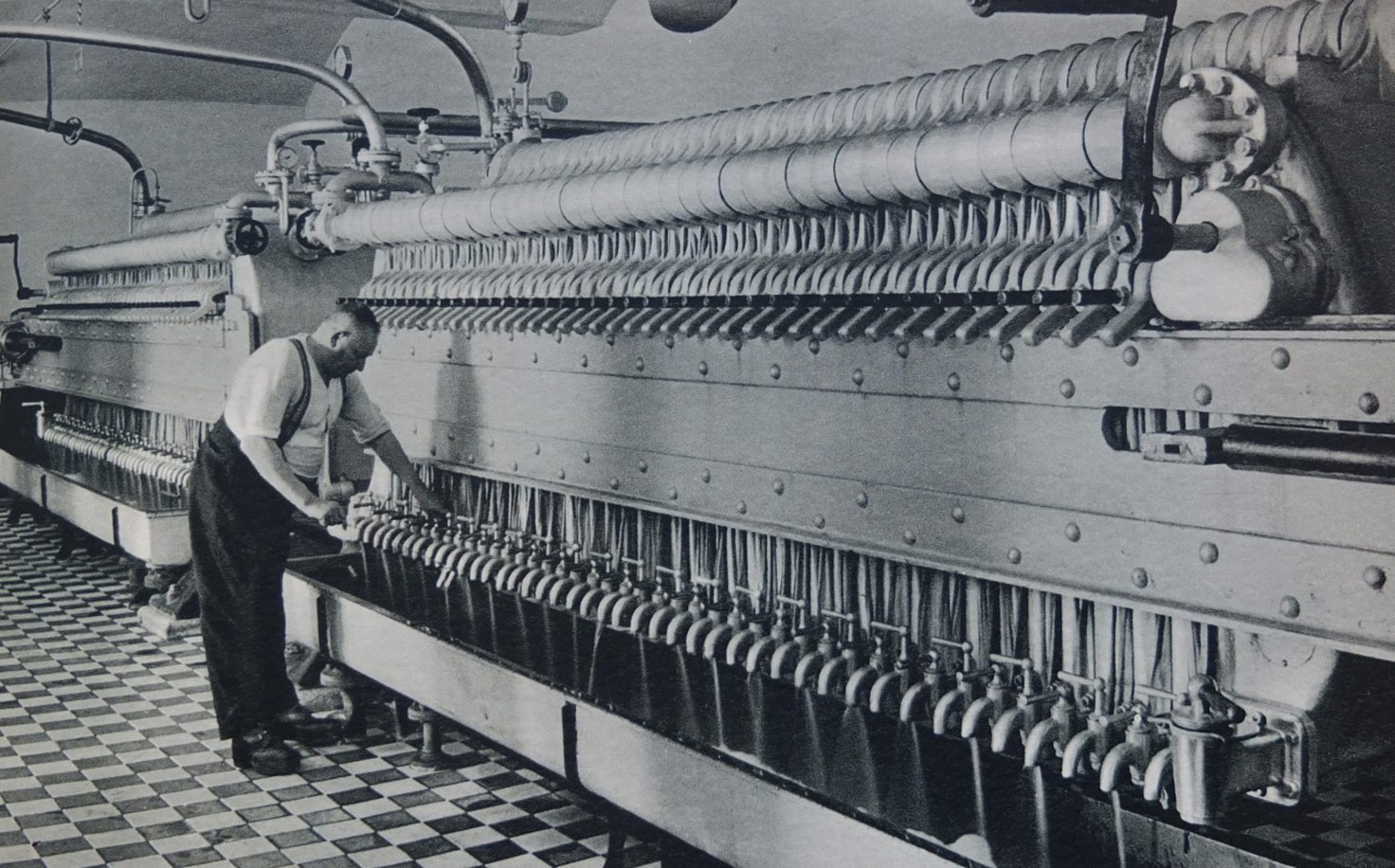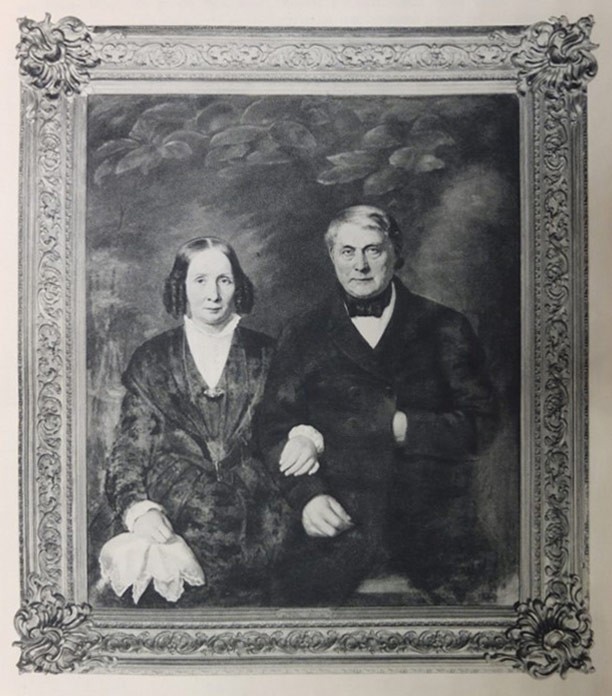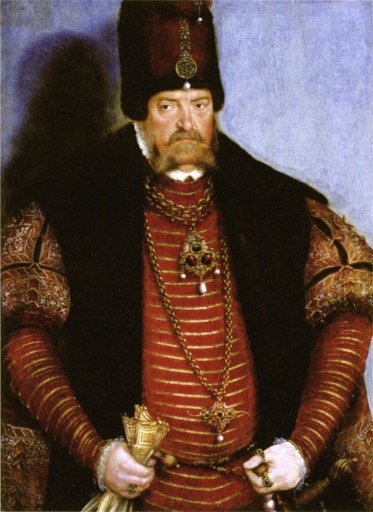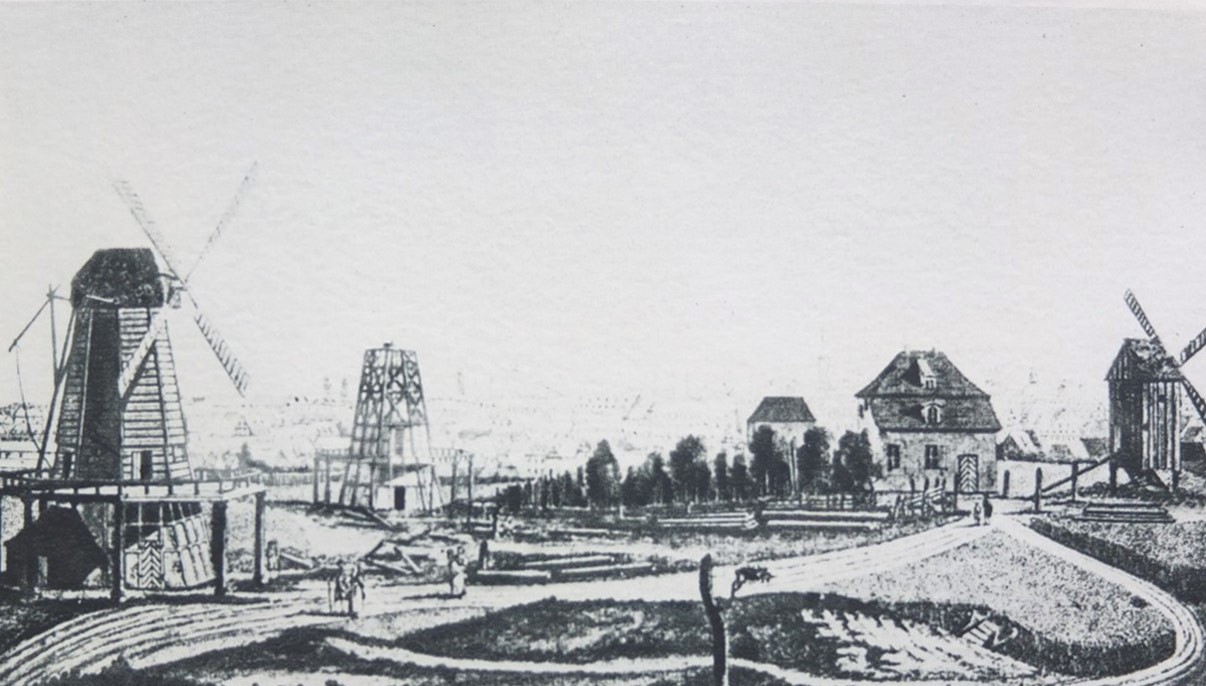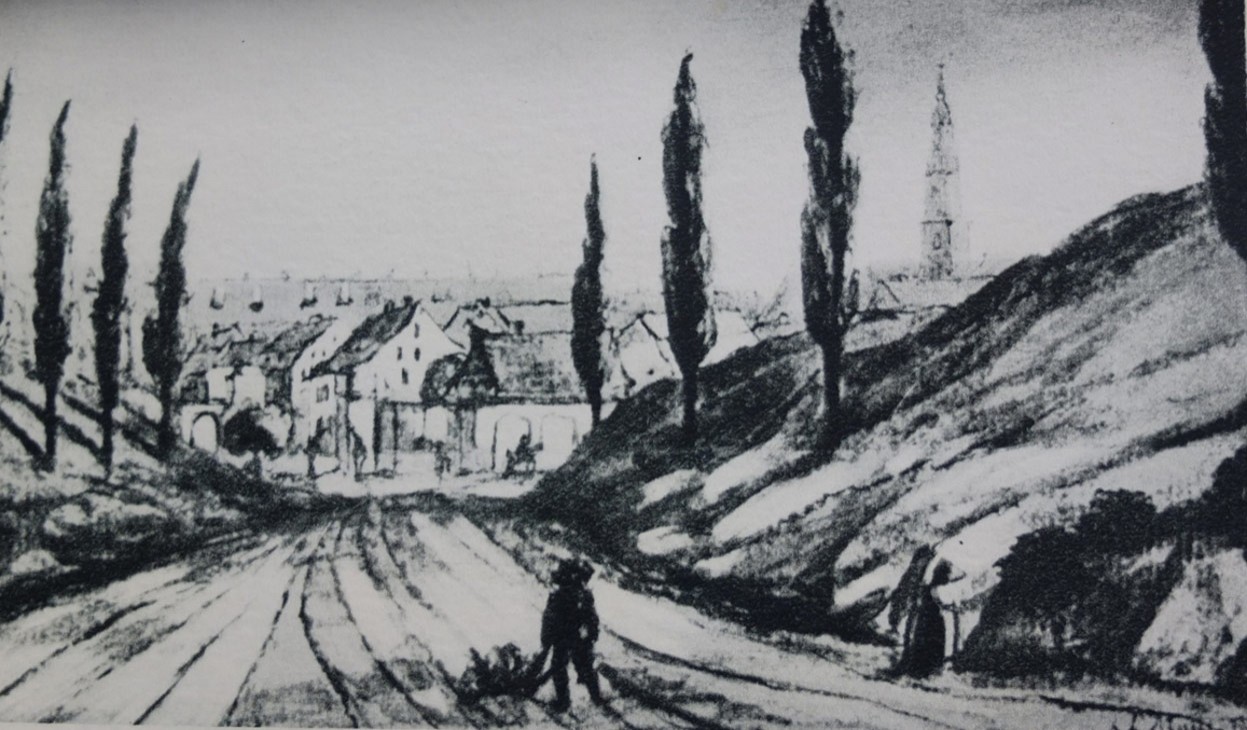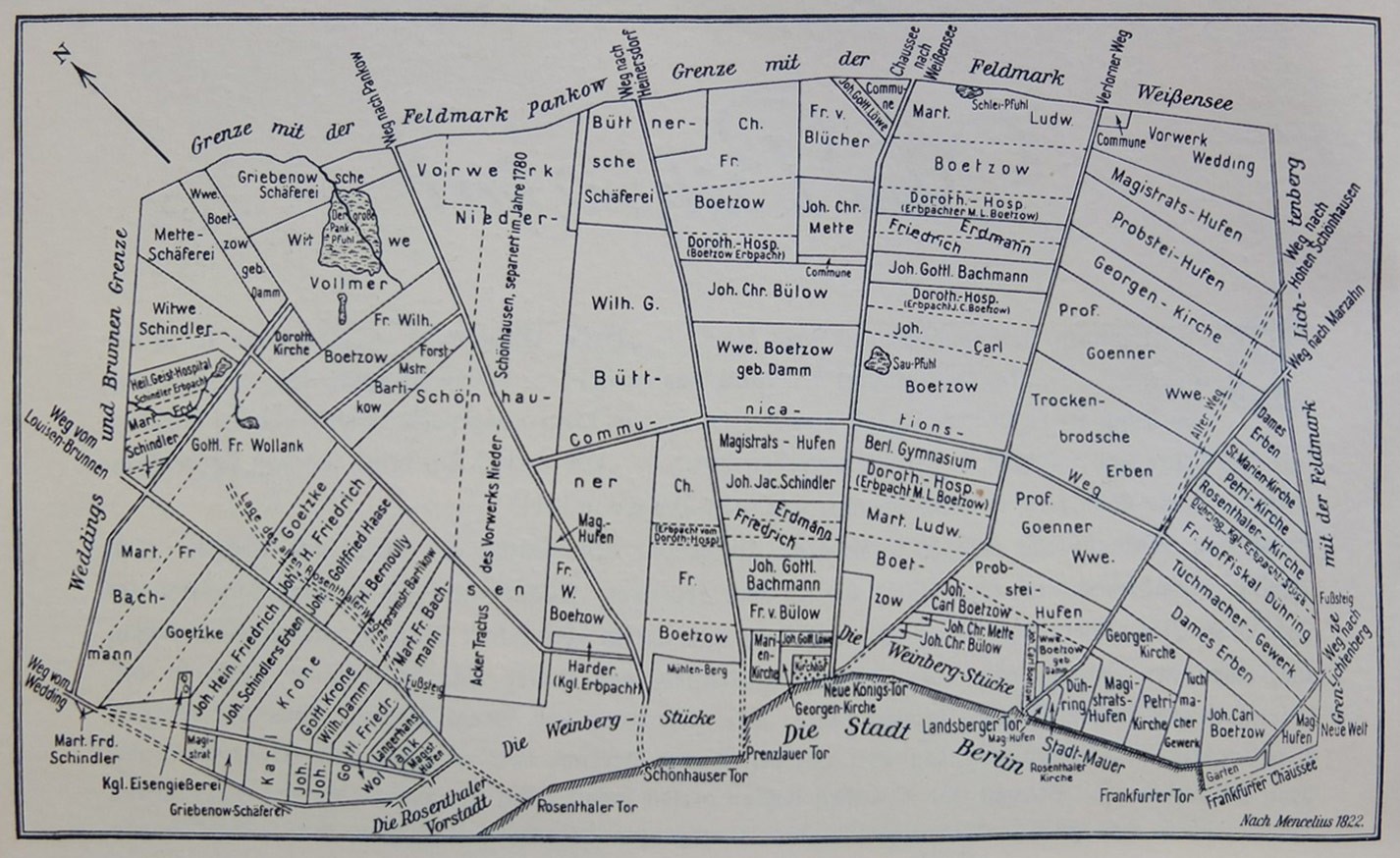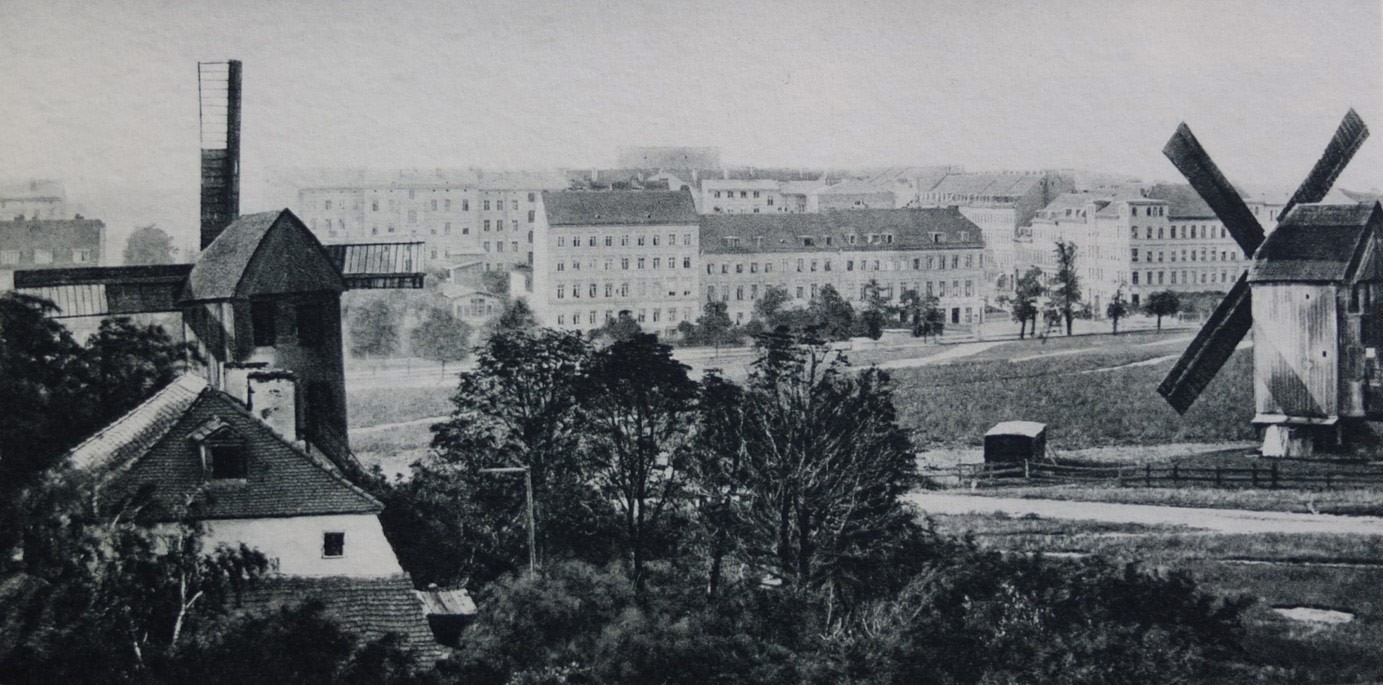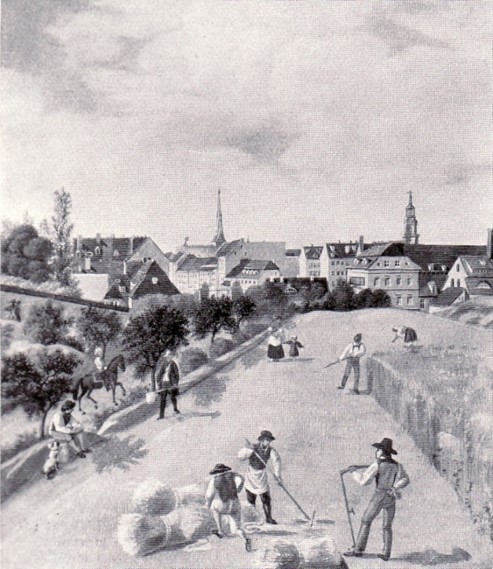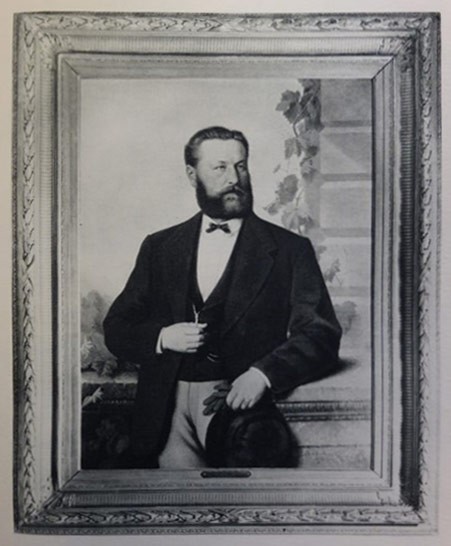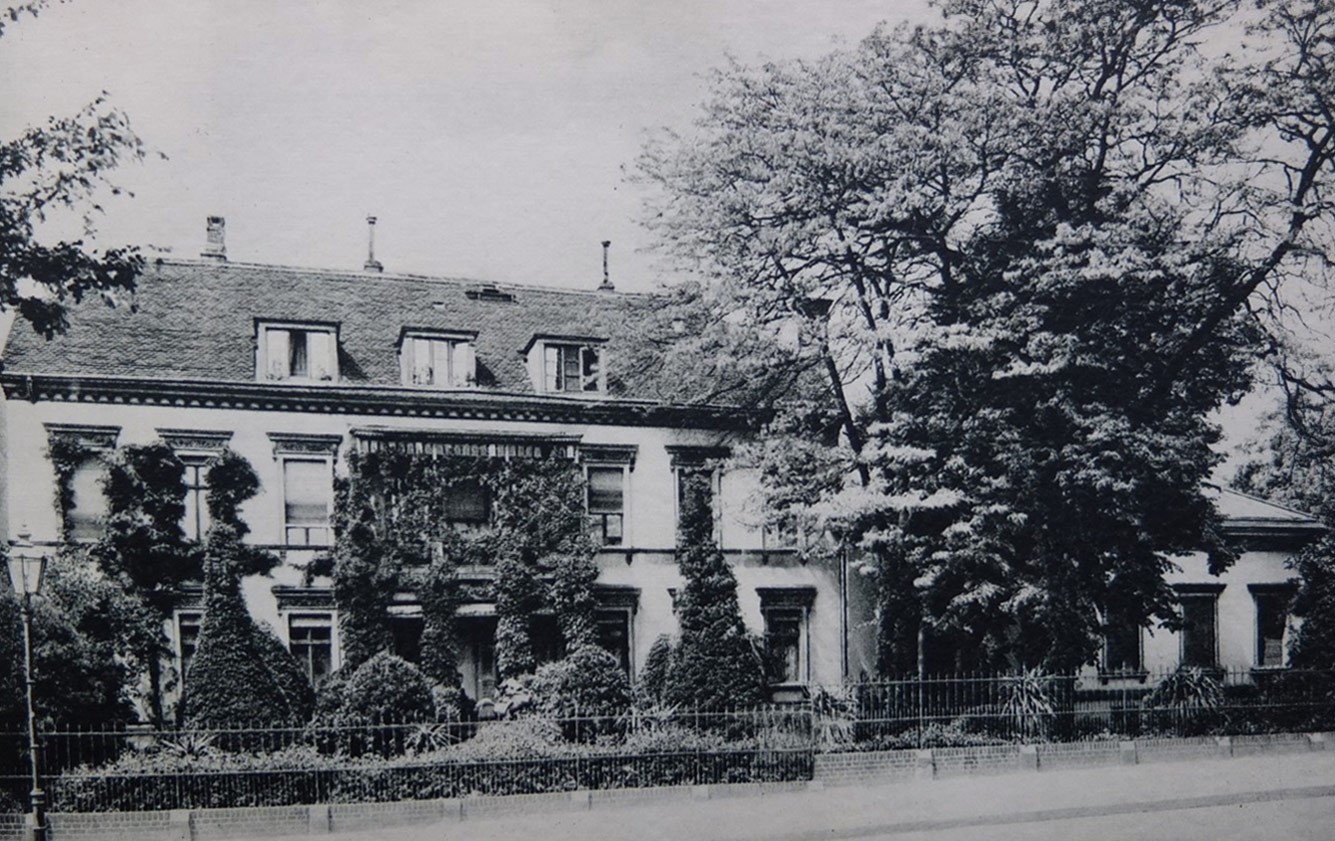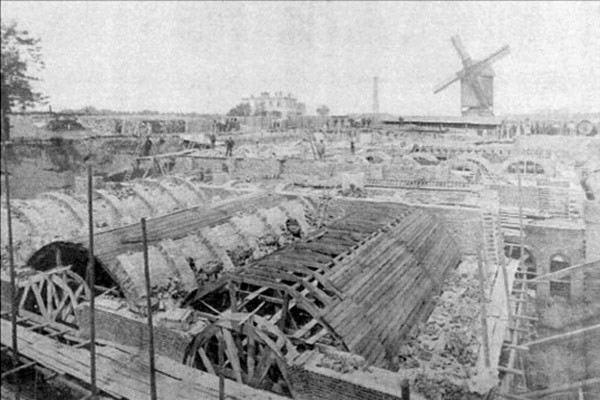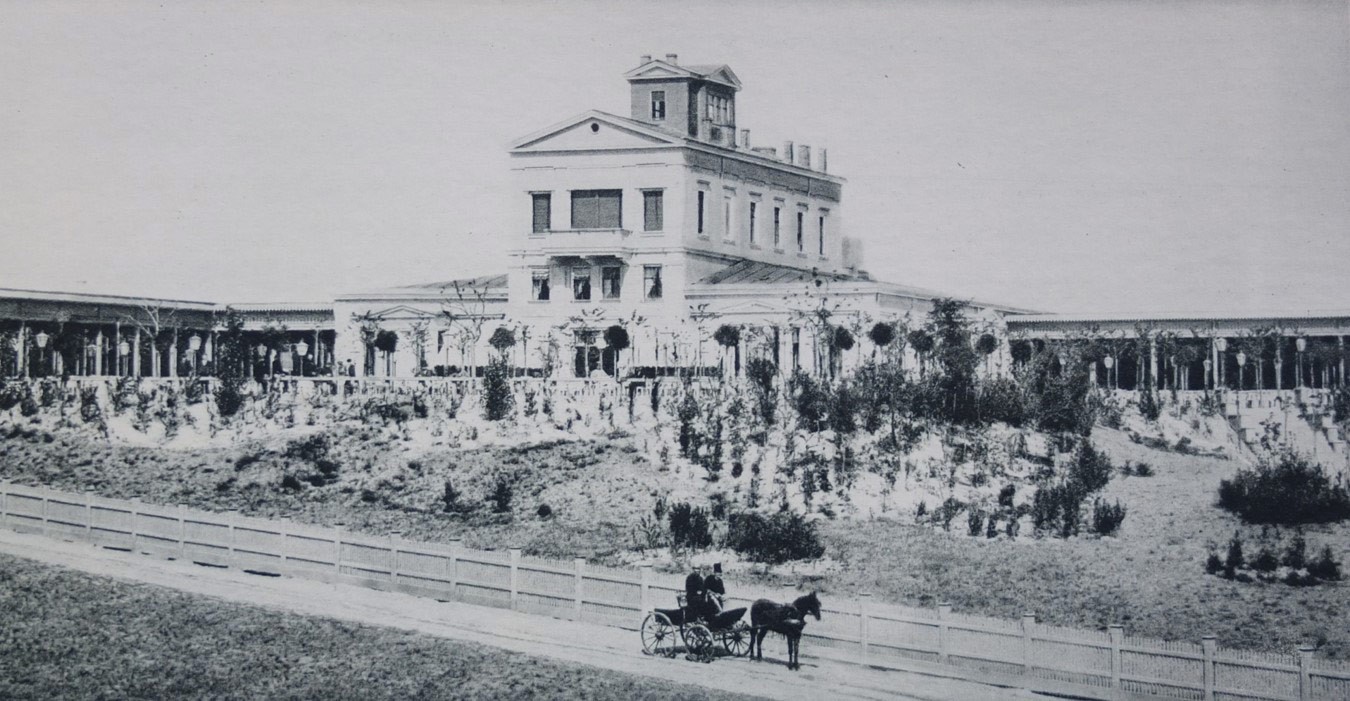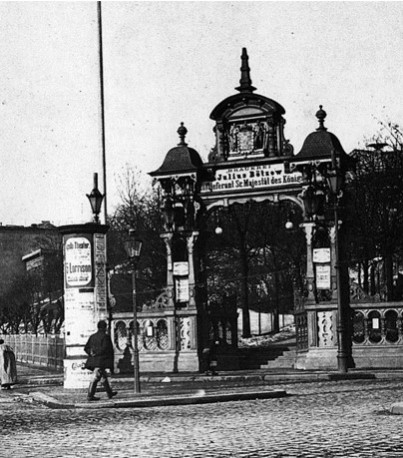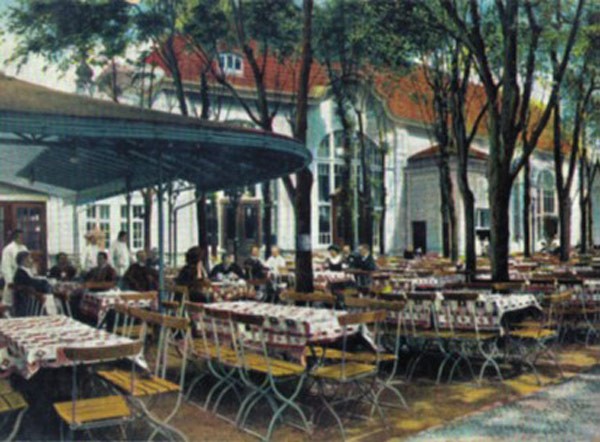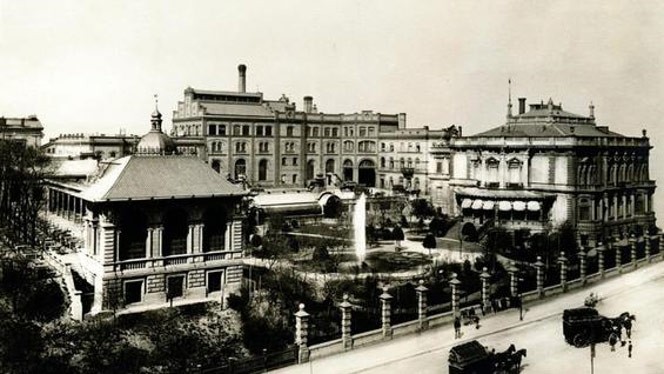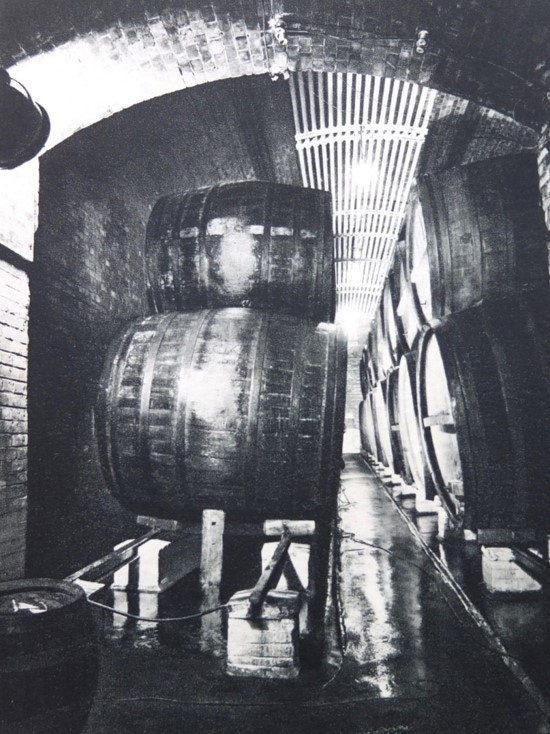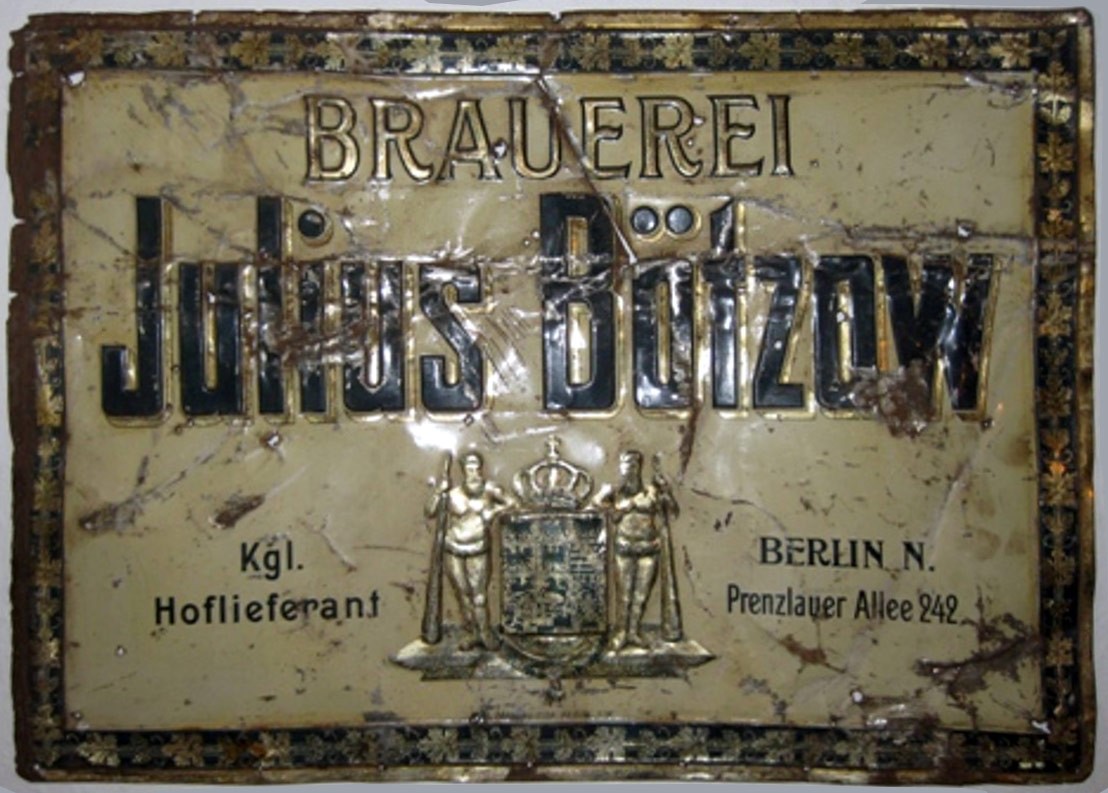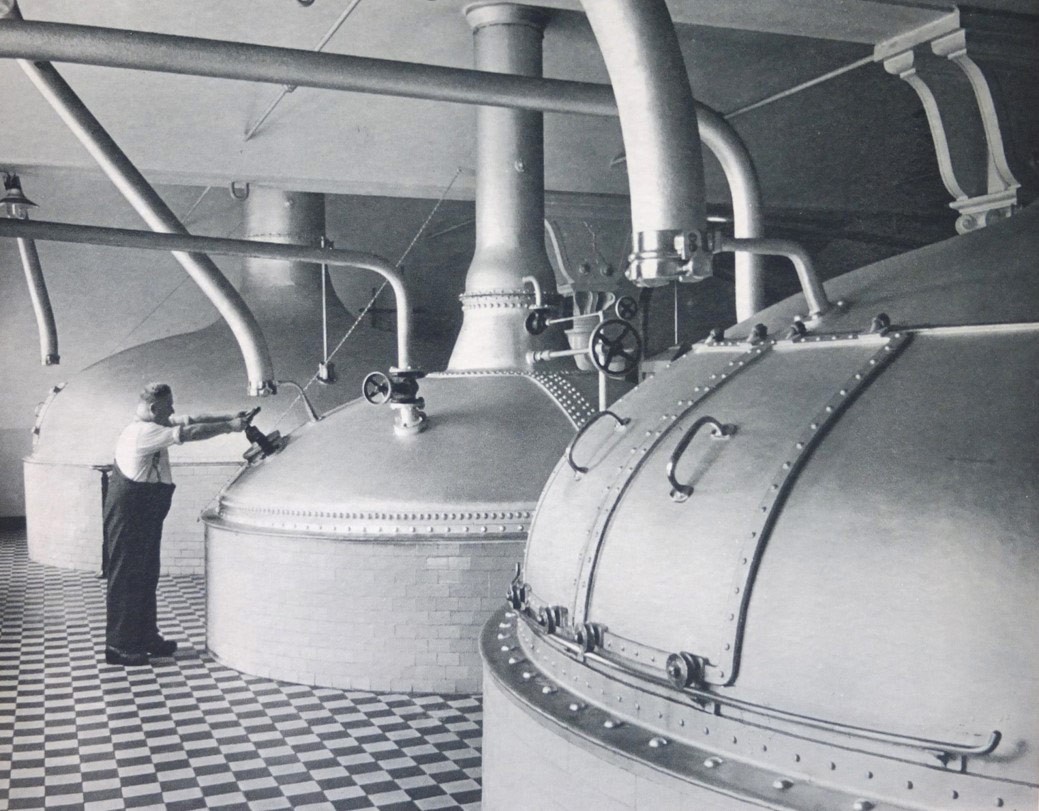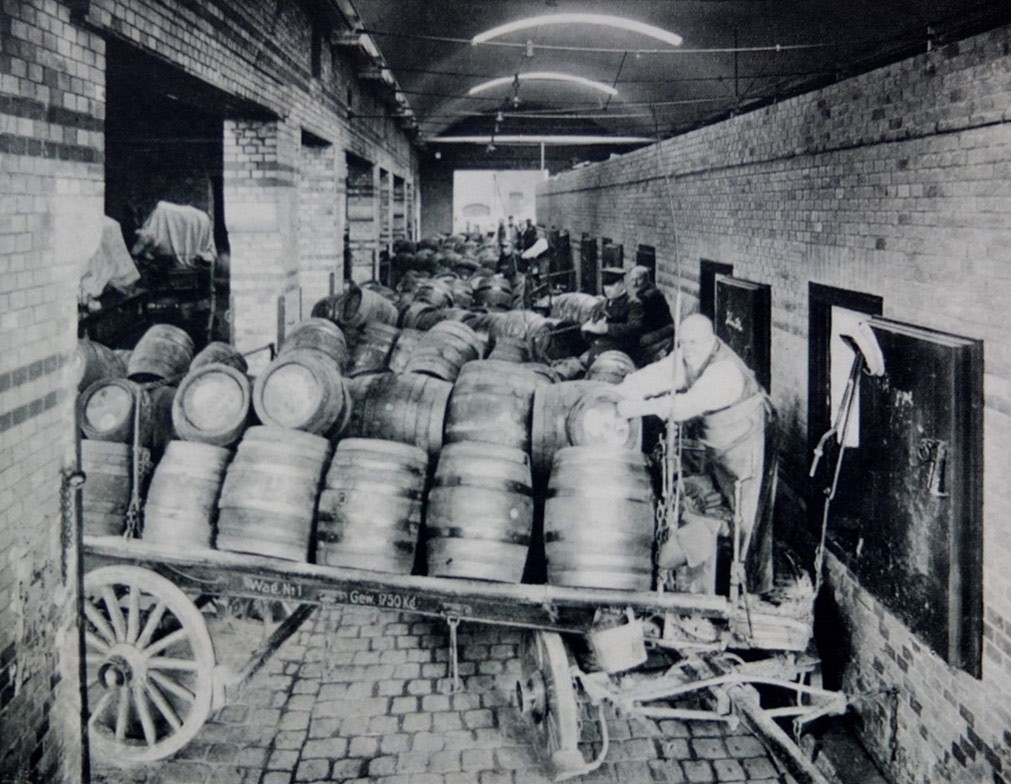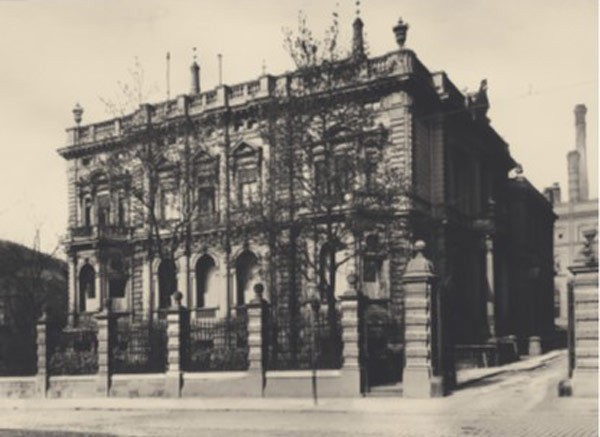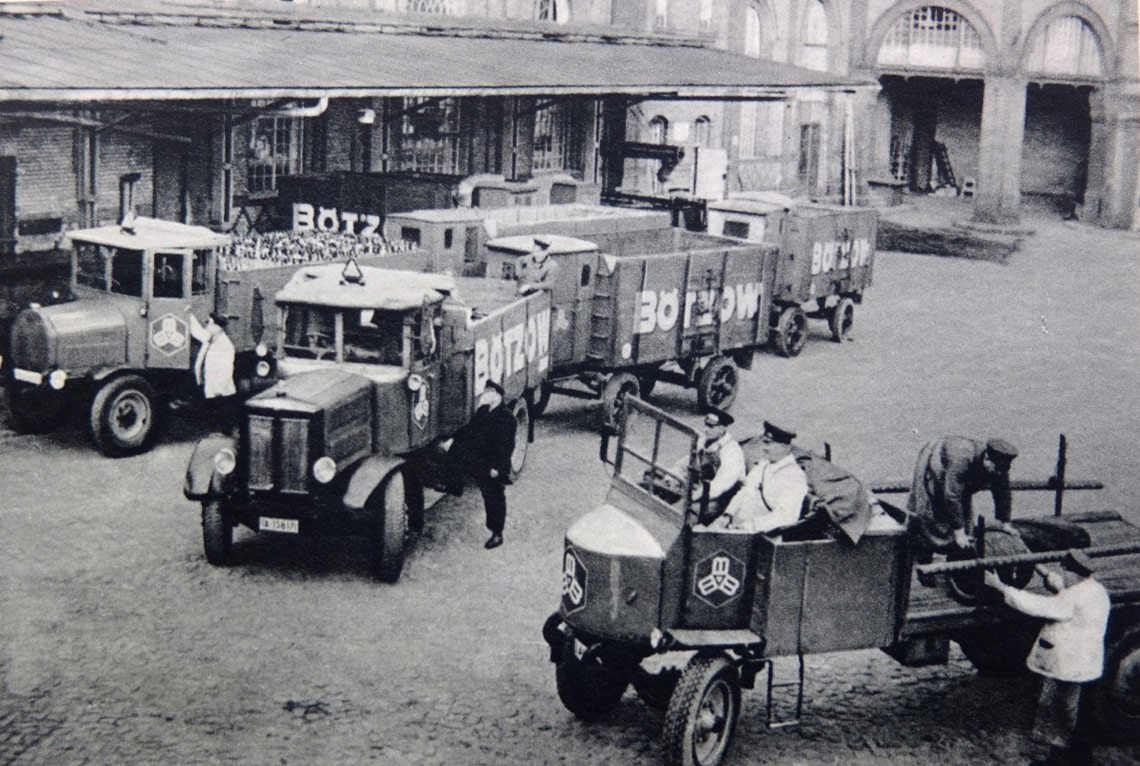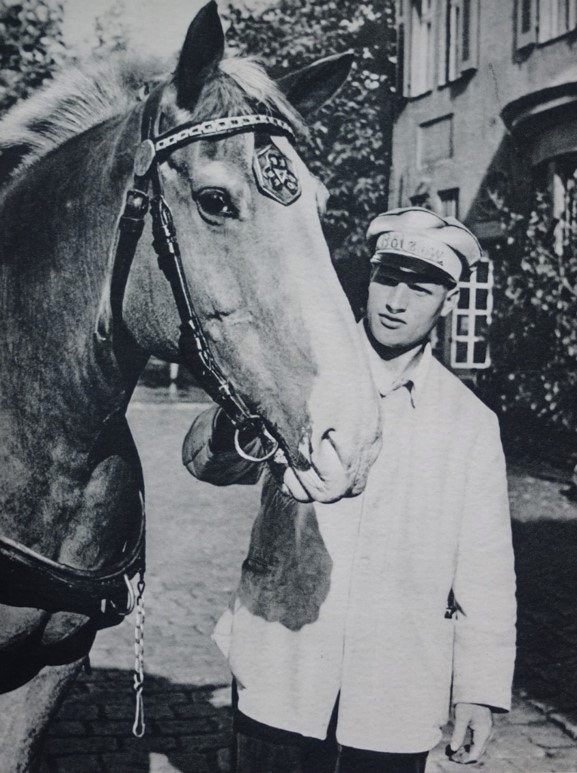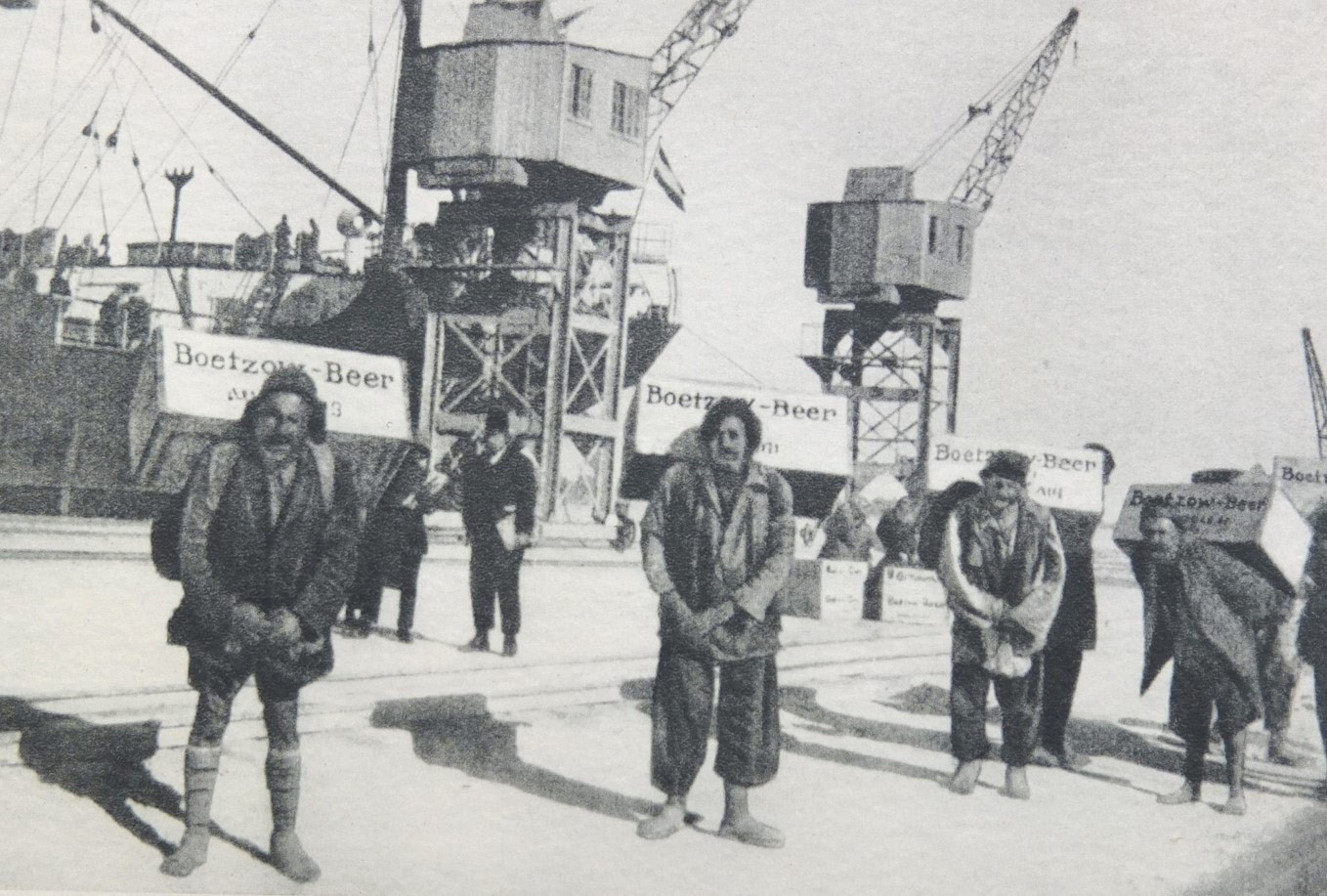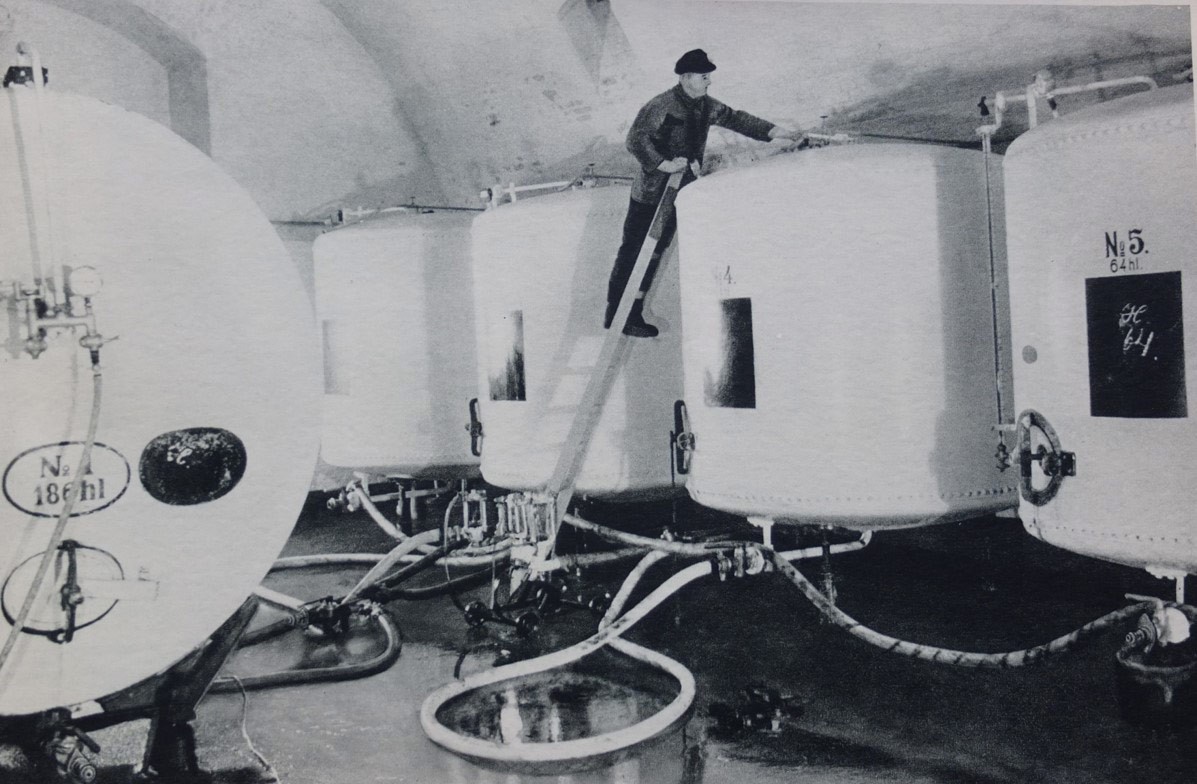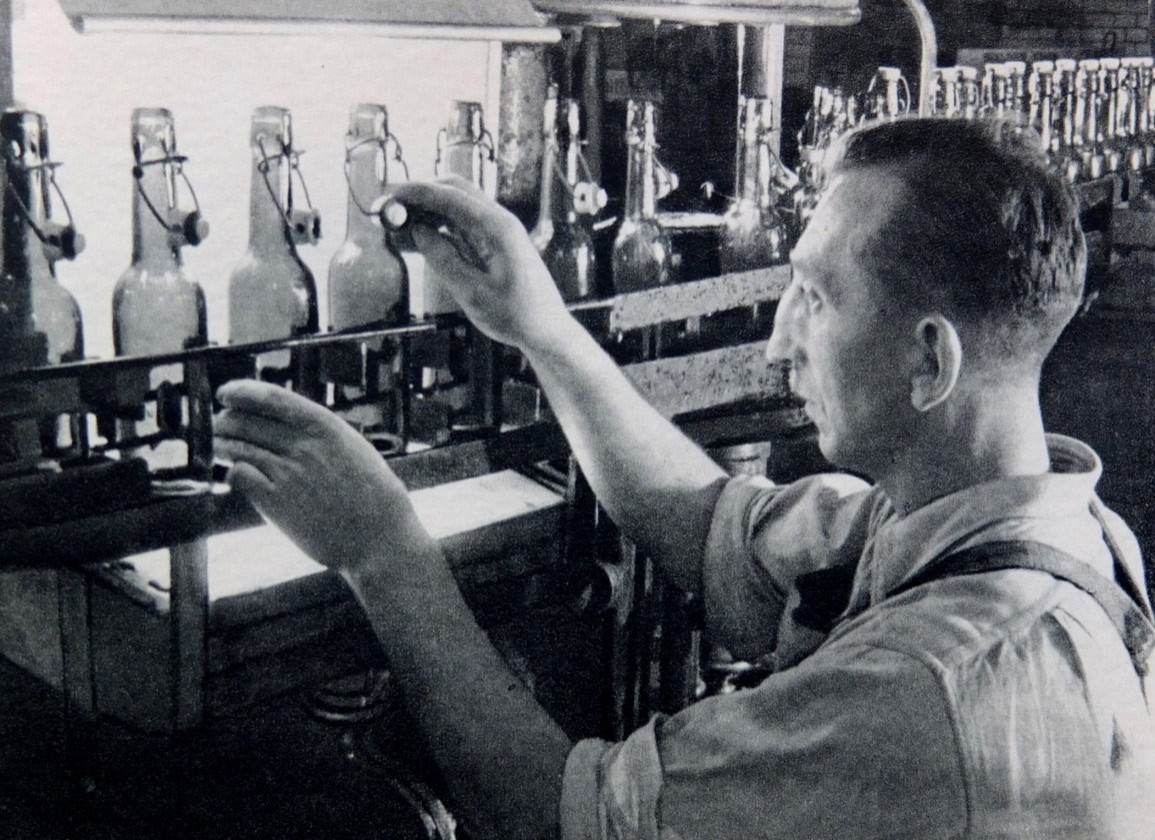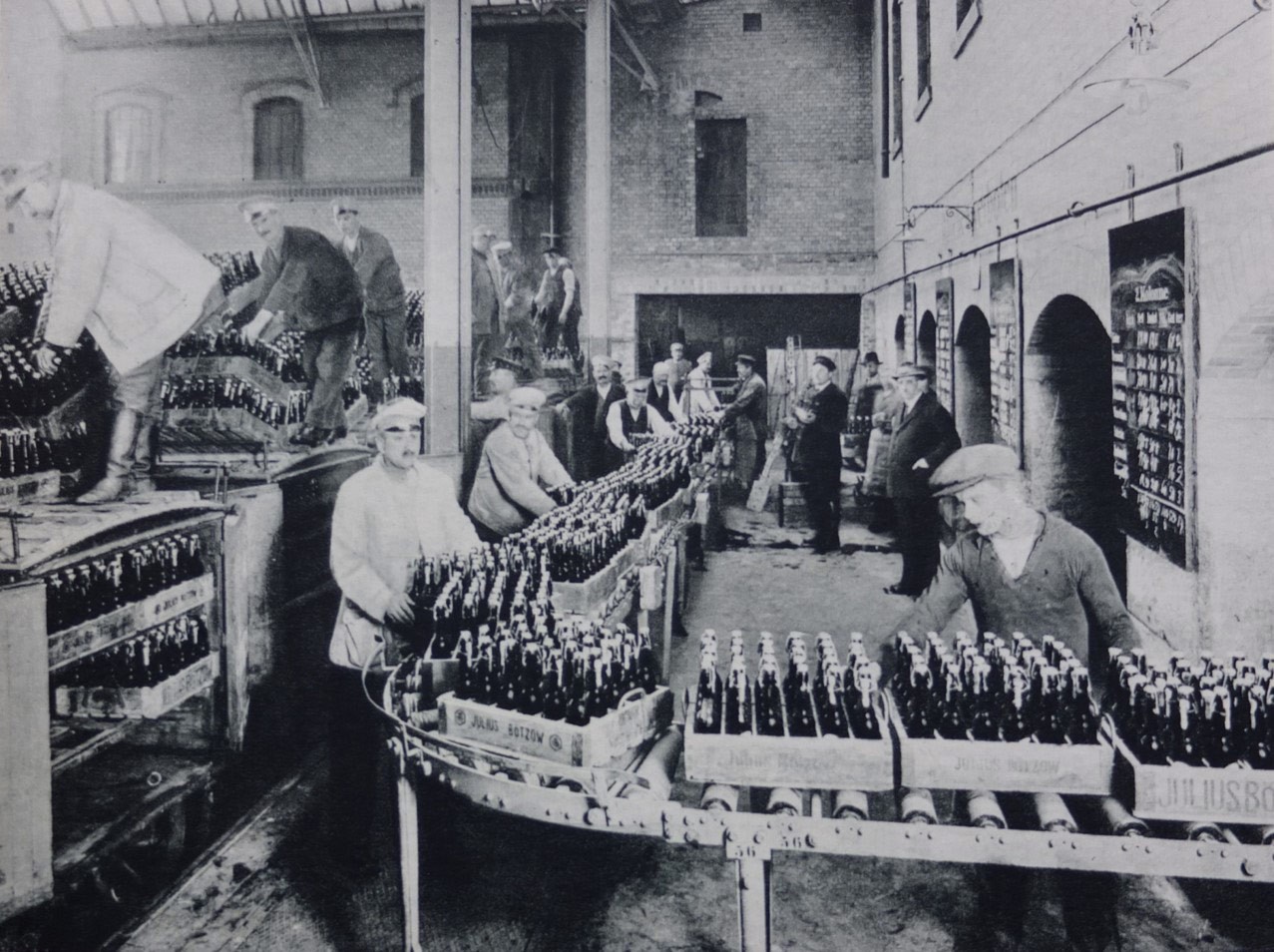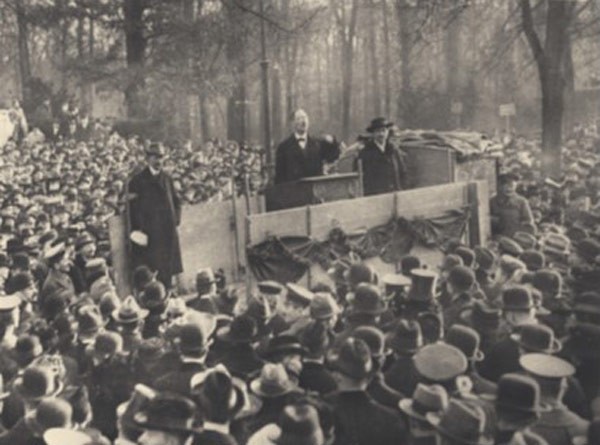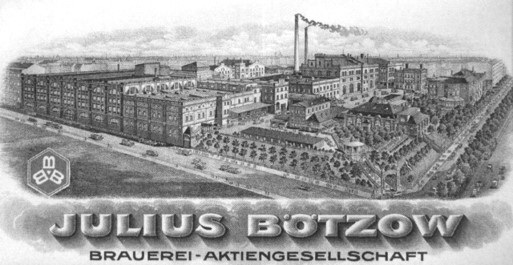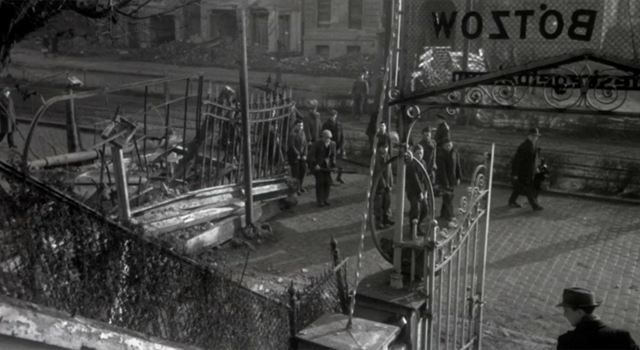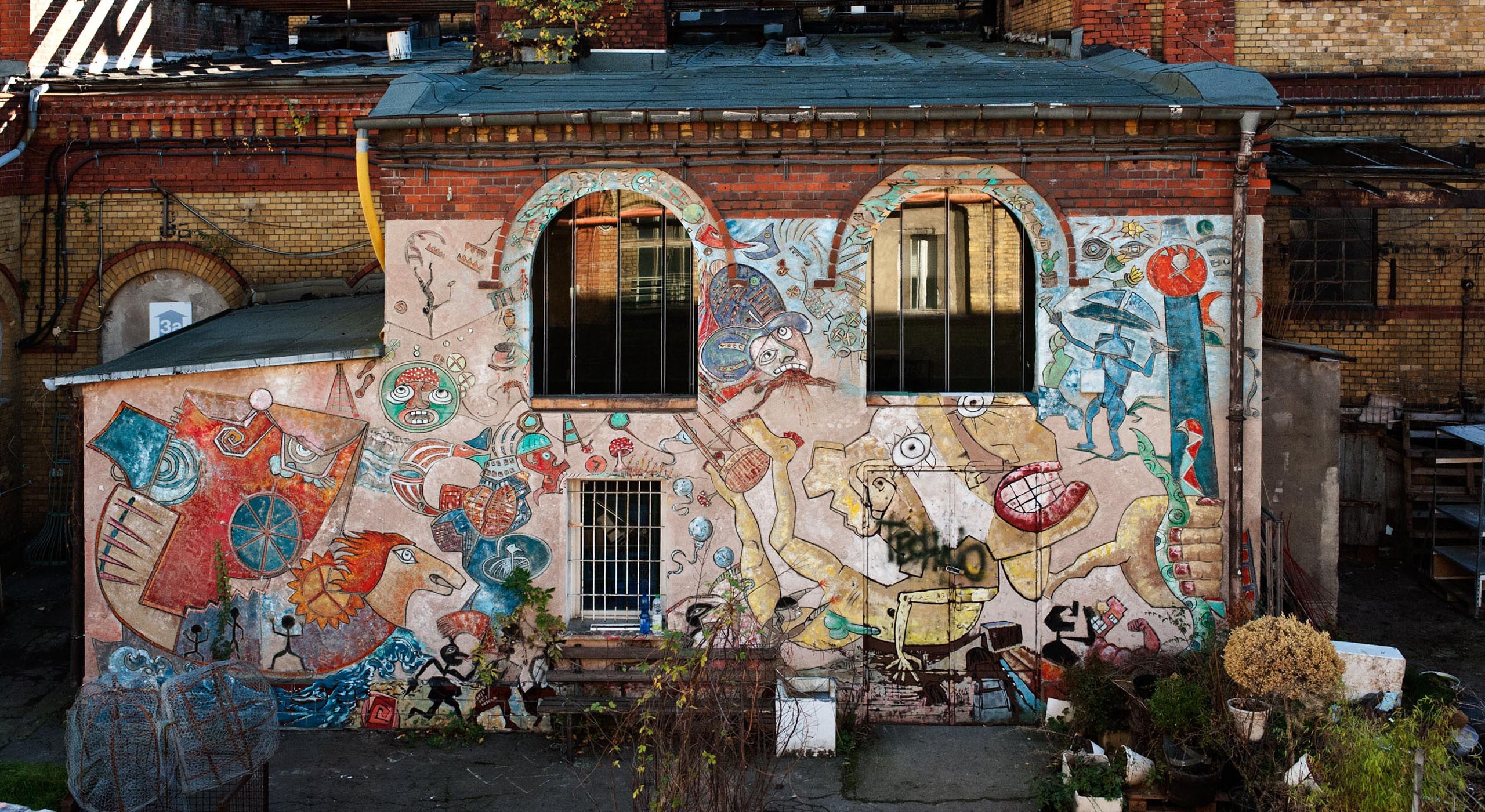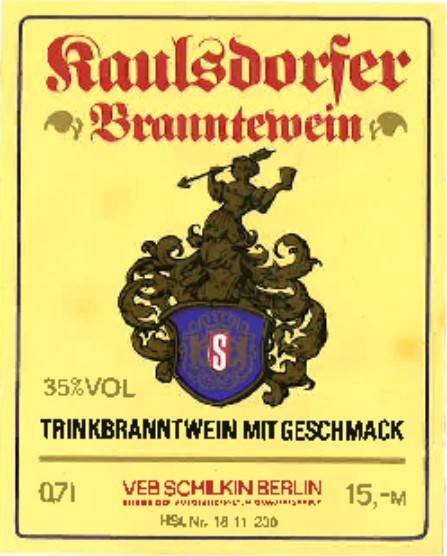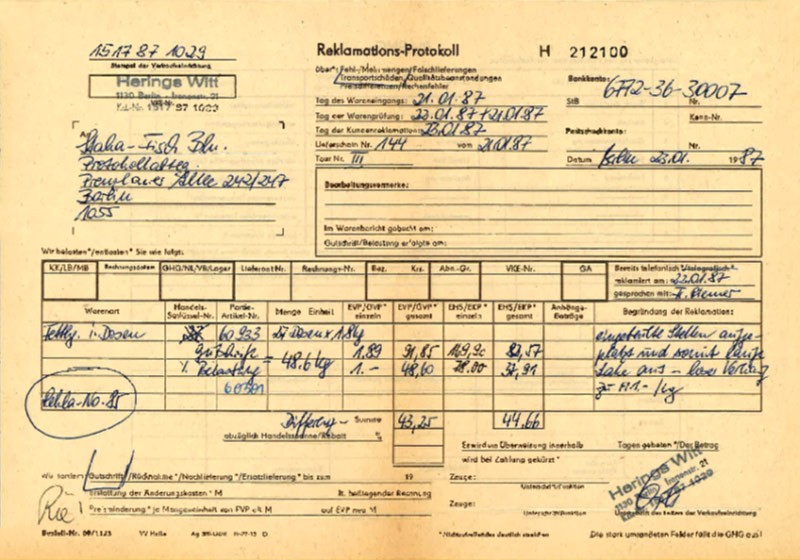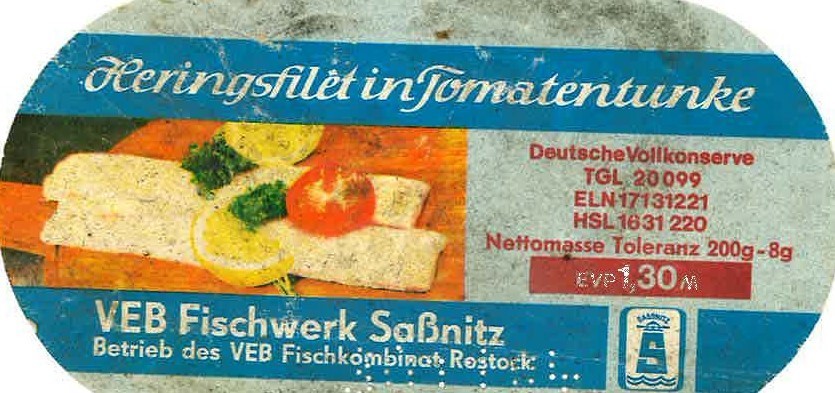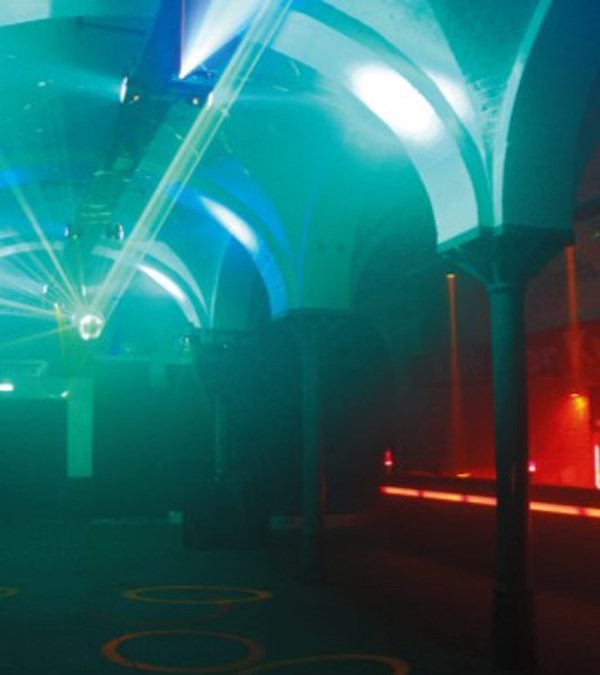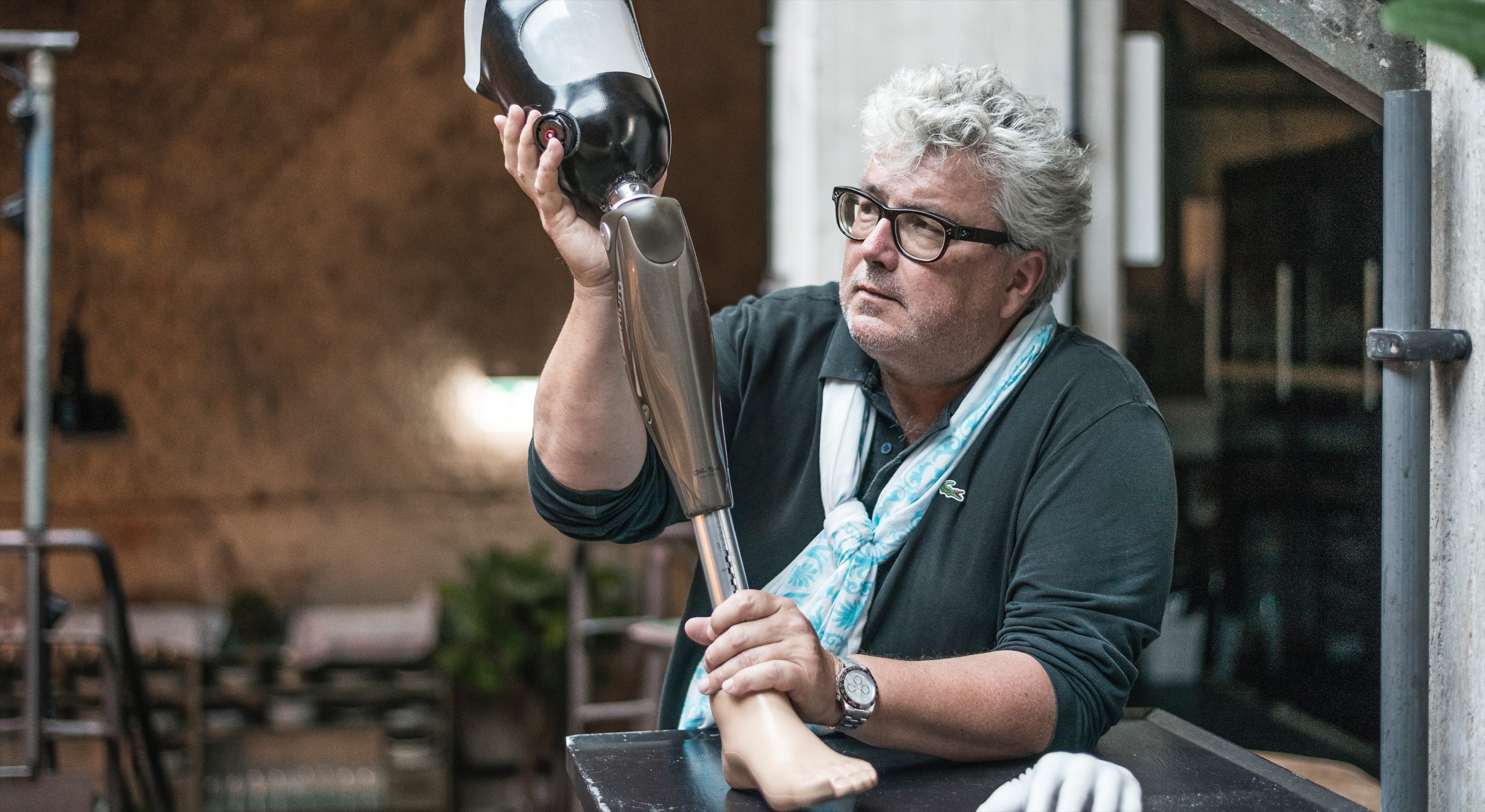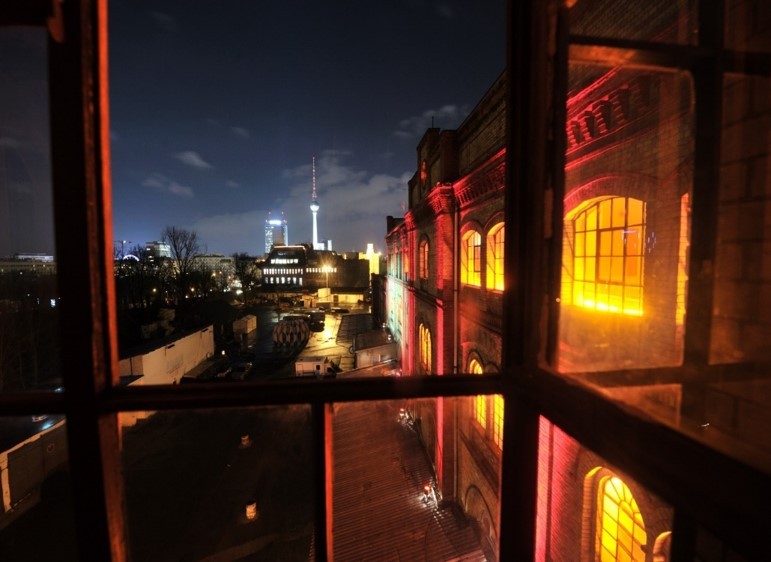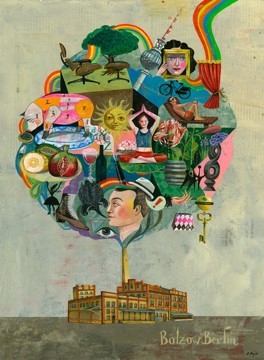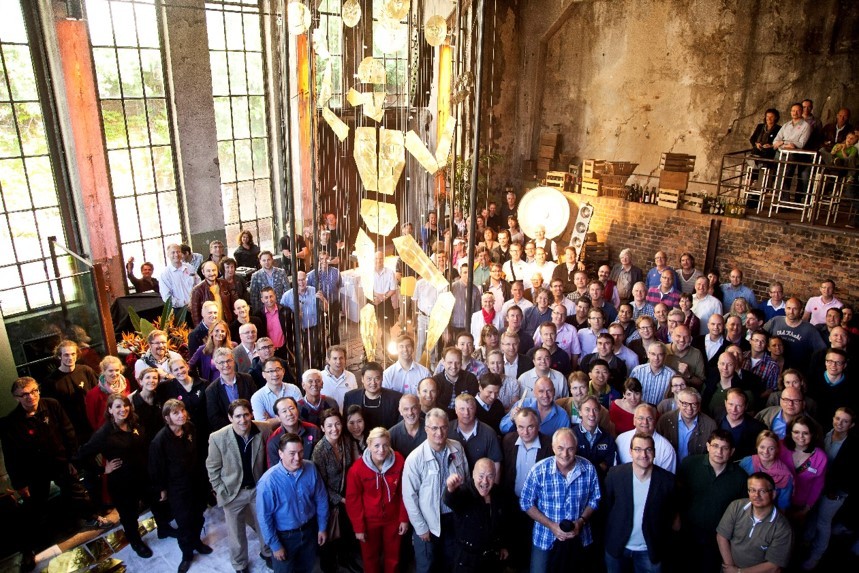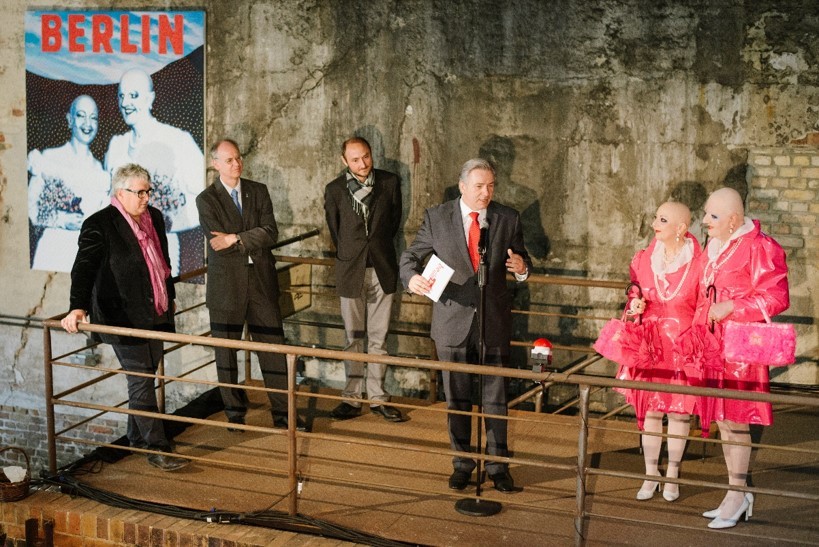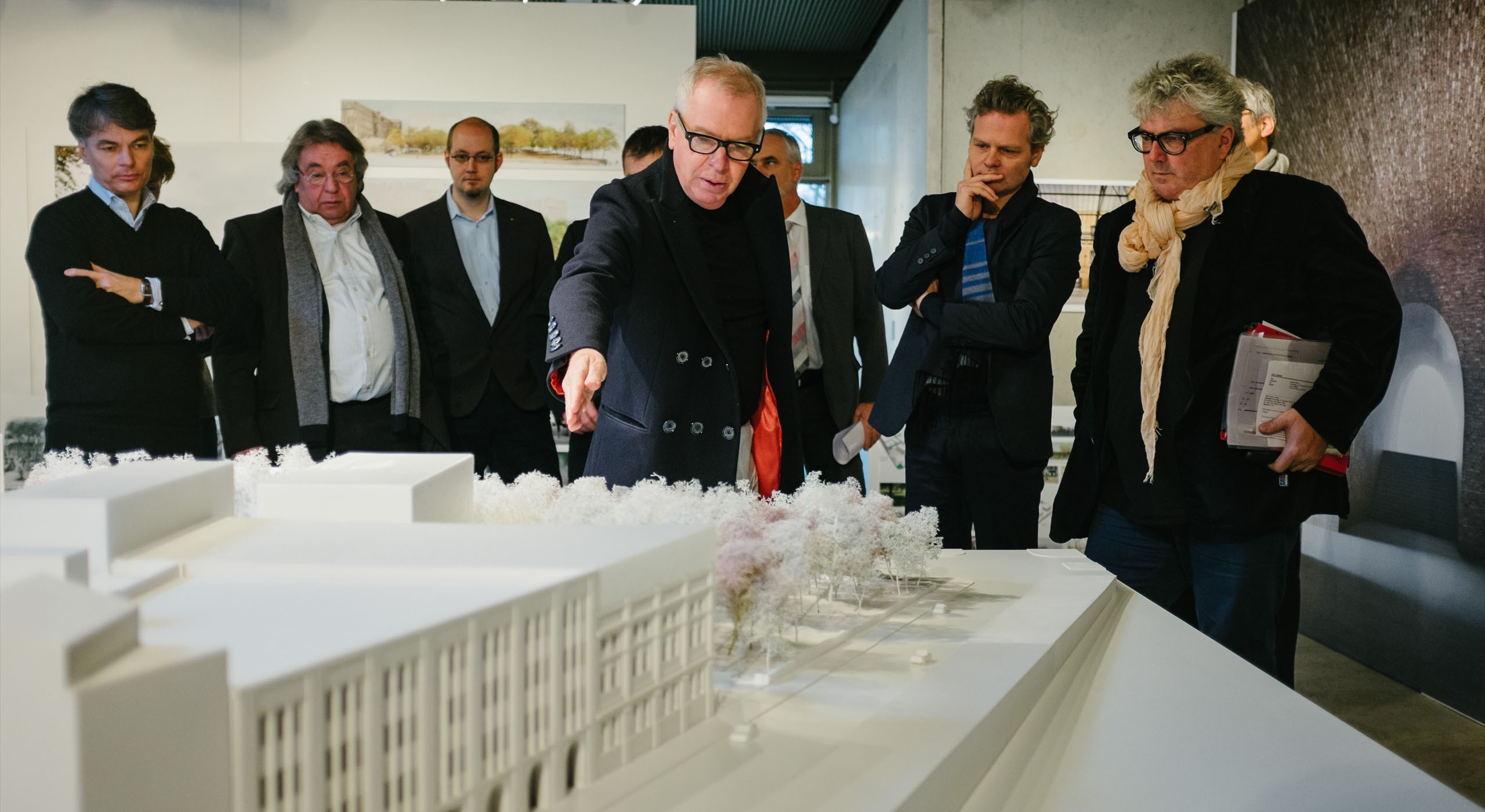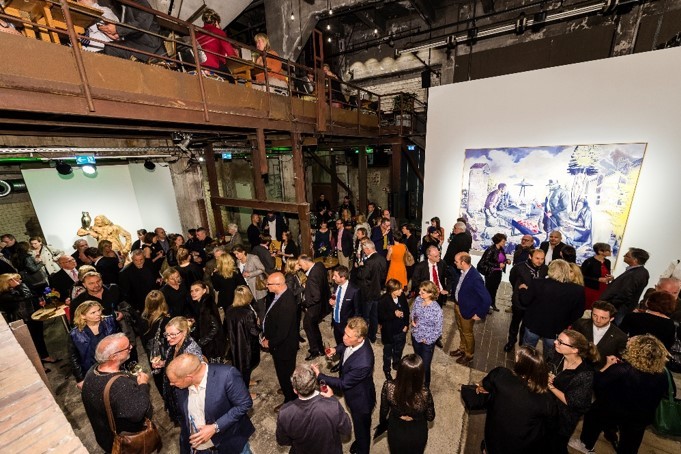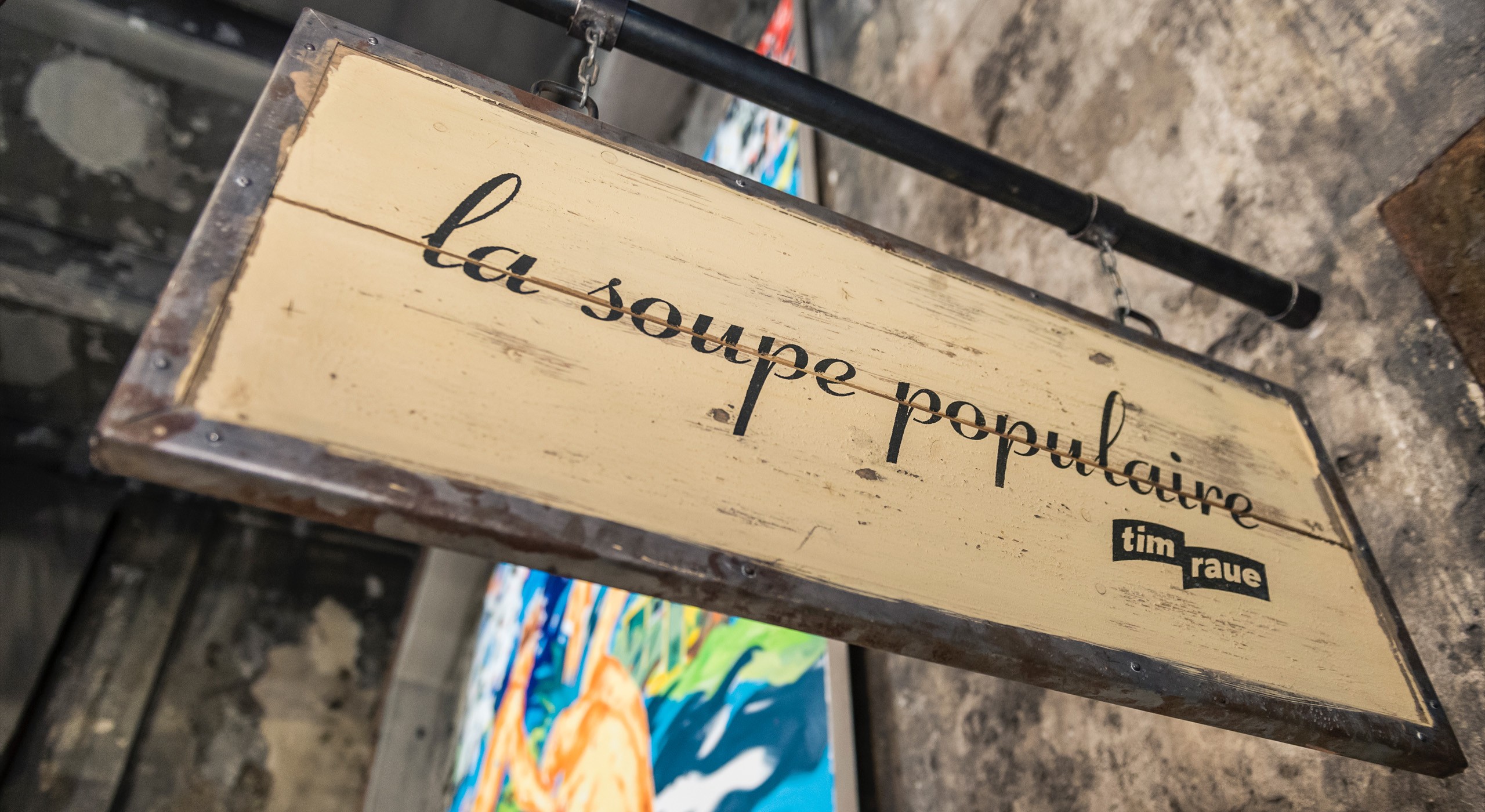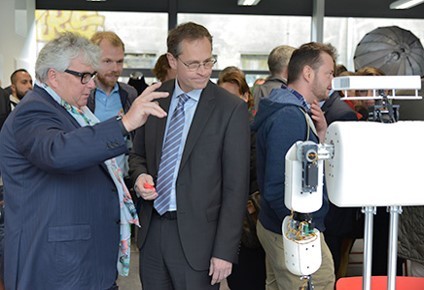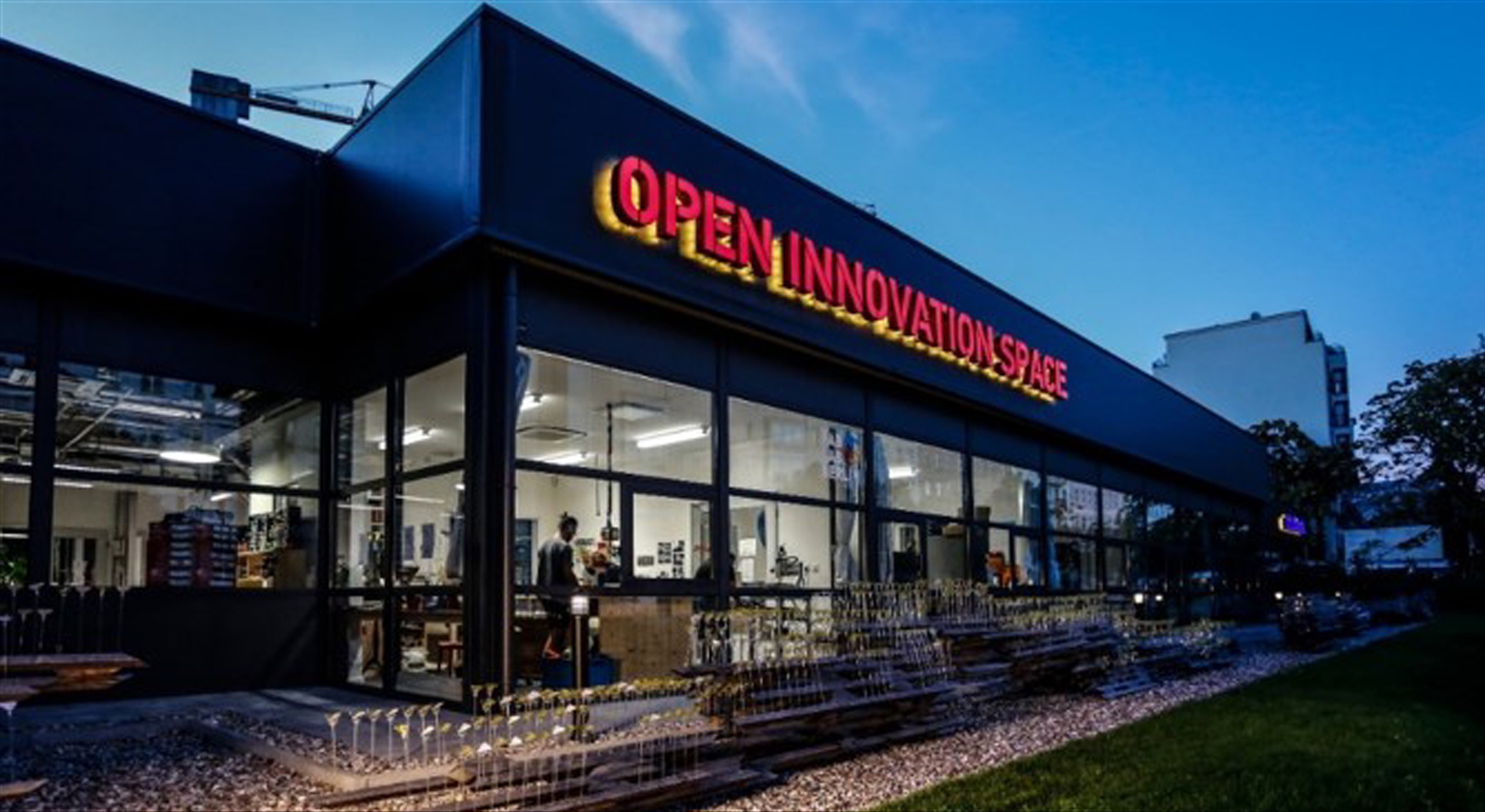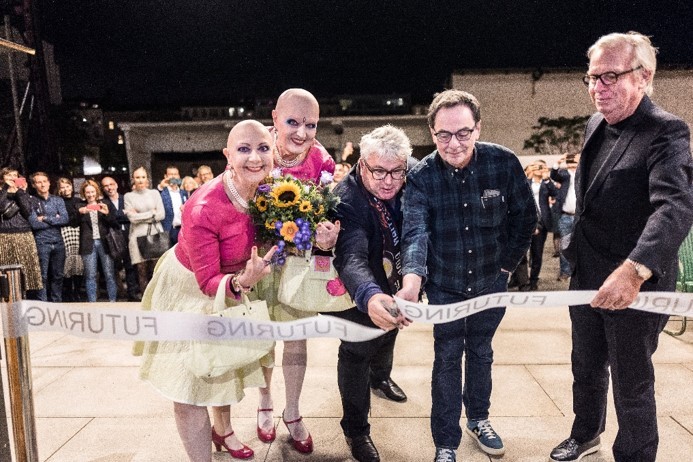A painting of estate owner Christian Friedrich Bötzow and his wife Charlotte Louise Wilhelmine, née Passow – grandparents of Julius Bötzow, who founded the brewery. © 2008 Alfred and Elisabeth Gilka-Bötzow
The Bötzow family belonged to the established Berlin circle. In 1556, electoral prince Joachim II (pictured) gifted the house in Kloster Strasse 88 to his manservant Martin Bötzow, who was responsible for his silverware. After this, the name Bötzow appears almost continually in the church records of St. Mary’s Church. Source: unknown
Engraving by J.G. Rosenberg, dating from around 1780. Prenzlauer Berg was formerly called “Windmühlenberg” (Windmill Hill), because Frederick the Great had eight windmills built here to meet the increasing demand for flour. Source: Commemorative brochure entitled “75 Jahre Julius Bötzow Brauerei Berlin 1864–1939”, Berlin 1939
Prenzlauer Gate at the foot of Windmühlenberg, 1802. Berlin, the seat of the electoral prince, became the capital of Prussia and later the imperial capital. As it grew, the city swallowed up more and more farmland and came closer to the foot of Windmühlenberg. Source: Commemorative brochure entitled “75 Jahre Julius Bötzow Brauerei Berlin 1864–1939”, Berlin 1939
Map of the area around Prenzlauer Gate at the foot of Windmühlenberg, 1802. After the separation of 1822–27, the Bötzow family owned approx. one fifth of the land to the north-east of Berlin. © 2008 Alfred and Elisabeth Gilka-Bötzow
They had vineyards and fields where they grew grain and potatoes. By the mid-1850s, the family owned 3,500 morgens (around 875 hectares), making them the biggest landowners in Berlin. Source: Commemorative brochure entitled “75 Jahre Julius Bötzow Brauerei Berlin 1864–1939”, Berlin 1939
As the urban sprawl of Berlin expanded and swallowed up more and more pasture land, meadows and fields, the Bötzow family began to seek out alternative business activities. To support their agricultural activities, Carl & Franz Bötzow built a distillery and a wheat beer brewery (1843) on Linien Strasse. Source: unknown
Julius Bötzow (1839–1914, here: 32 years old) was a farmer by vocation. However, he had always dreamed of brewing beer for a living. After learning the trade from a friend of the family, he wanted to brew beer in the Bavarian style. Source: Commemorative brochure entitled “75 Jahre Julius Bötzow Brauerei Berlin 1864–1939”, Berlin 1939
The Bötzow family home was a mansion on Prenzlauer Allee, close to Prenzlauer Gate. On 13 April 1864, at the age of 25, Julius Bötzow opened a brewery for bottom-fermented beer on Alten Schönhauser Strasse 22–24, just 1.2 km from the present site. His uncle Franz provided the necessary financial support for this enterprise. Source: Commemorative brochure entitled “75 Jahre Julius Bötzow Brauerei Berlin 1864–1939”, Berlin 1939
In 1864, Julius Bötzow began to build underground storage cellars on Windmühlenberg hill on land belonging to his family. © Dr Martin Albrecht
The first public house – a precursor to Bötzow Brewery – was built on Windmühlenberg hill some time after 1865 and included a beer garden which could accommodate nearly 6,000 guests. Source: Commemorative brochure entitled “75 Jahre Julius Bötzow Brauerei Berlin 1864–1939”, Berlin 1939
